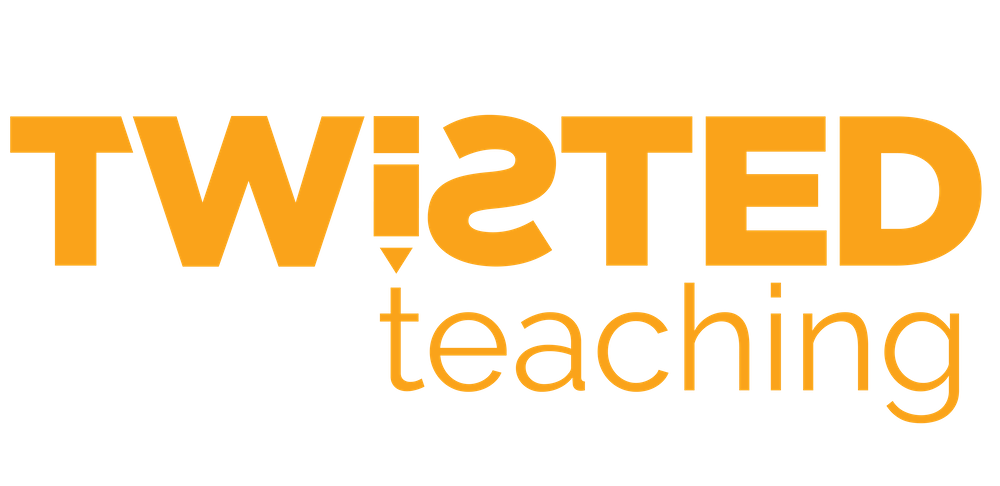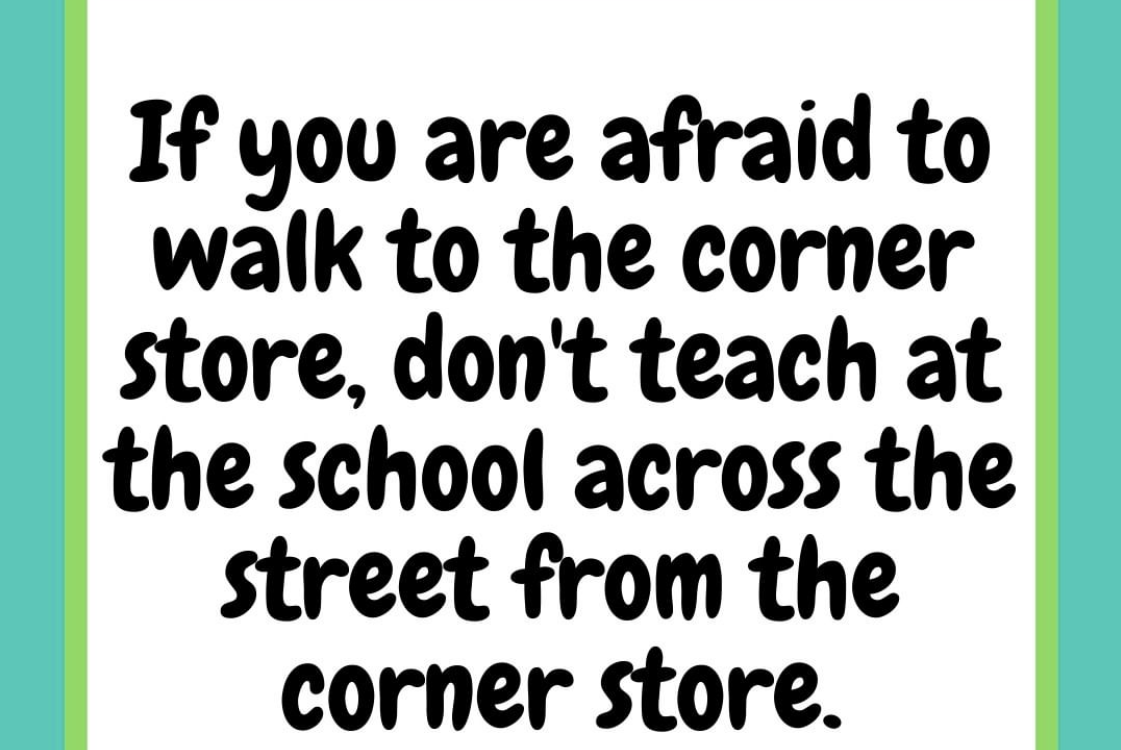While pursuing social media, in the aftermath of the killing of George Floyd, I came across an image on Instagram that really struck a chord with me. The image was a quote posted by the Goode Education Group that read, “if you are afraid to walk to the corner store, don’t teach at the school across the street from the corner store.” This quote got me to thinking about schools connections to the communities that they serve–or lack thereof–and how this shapes the educational experiences students have within schools. This then led me to think about how schools view themselves and the reason why some educators exist in spaces that they are terrified to be in. The conclusion I came to is that many schools see themselves as schools within a community and not schools that are a part of a community and that, my educator friends, has got to change (yes, even if you are teaching virtually…it has to change) if we are going to create learning spaces that value, educate, and empower all students!
The neighborhoods in which we live and our schools exist, play a critical role in the education and opportunities students receive. While some educators may view urban areas as a possible hindrance to quality education and social mobility of youth, equity-minded educators see the community—or place where parents and students live and work—as a socially and culturally rich space of numerous opportunities for advancement. Educators who capitalize on the strengths of the inner-city community members and participate in aggressively confronting the inequities that they face can create neighborhood schools that rely on the assets of students to enhance school culture and instruction. Leading by example, they can also prepare students to be advocates of change in their schools and the communities where they live.
Focusing on neighborhood inequality, violence, and the effects of these factors on schools and urban youth, Robert J. Sampson (2012) writes, “before there can be a robust civic life and the next generation can learn, we must first have safe communities.” Sampson proposes community-level interventions over individual-level interventions for these safe communities to happen–which will potentially lead to better quality schools. Community-level responses start at the local level and help to address the immediate needs of the community, such as quality housing, crime prevention, and rebuilding of municipal services and community infrastructures. By getting the community involved and placing emphasis on changing the community instead of people in the community, Sampson suggests that there will no longer be a push to escape community schools via vouchers and choice schools. What will transpire is a revival of community schools that reflect the changing and progressive dynamics of the community.
Sampson focuses on how dysfunction in the community can negatively affect schools’ abilities to be successful and address students’ needs. Odis D. Johnson (2006), conversely, focuses on how the community–or place–dictates students’ success in school and social mobility. In his analysis of urban communities and their connection to social mobility, Johnson introduces the theory of “proximity capital.” He describes proximity capital as “capital of association” or one’s social movement, or lack thereof, being directly linked to where they live and the assets of their communities. He relates this notion of proximity capital to education by connecting students’ mobility, immobility, and access to quality programs within the schools to their communities. While homogenous communities provide cultural capital, diverse communities have the potential to provide better quality and rigorous programs within the schools, which can, in turn, lead to more significant social mobility opportunities. Sampson and Johnson use different approaches to their analysis of the role of communities in shaping schools and opportunities. But both scholars agree that the nature of the community is essential to the development of educational policies and practices within our schools. The community also affects how educational decisions dictate students’ lives, in academic spaces, and their access to opportunities for social and economic advancement.
When studying urban education, it is vital to understand the critical link between community and school. Simply put, you cannot have one without the other. While seeking to reform the education that our students receive from the inside of schools is a start in the right direction, we must simultaneously, as educators, attempt to address the issues outside the walls of our schools. Instead of isolating schools from their communities—or moving out of them altogether—we must become wholeheartedly invested in our communities to meet our students’ real needs. Instead of providing students with an escape within the school, we need to create an environment where students see educators who invest in their communities, appreciate their communities, and strive to bring the beauty of their communities into schools and instruction. They need educators who are actively interested in serving their communities and partnering with community members to address the institutional and systemic problems that strip students of quality education and more significant opportunities for success.
The literature clarifies that communities are the heart of the schools they serve whether schools have a tie to the community or not. Understanding the critical connection between the community, schools, education, and opportunities will help us understand the role outside forces play in shaping the climate and culture of our schools and classrooms. When discussing the problems that are present within urban communities, we must not focus on them in isolation. However, educators must acknowledge the social, political, and economic systems that have created disparities and partner with community members to address them head-on because they also affect our schools. Instead of focusing on students individually, we need to view students for what they are—members of a community. Connecting students to their communities will allow us to look at the needs of the students from a perspective that understands the needs of the community and make educational decisions based on those needs. As well, as educators, we must find ways to invest ourselves and resources into the communities that we serve and create a noticeable presence apart from the school building. Instead of making mere assumptions about the neighborhoods, based on our biases, deficit thinking, and lack of cultural competence, we must be willing to go out into the communities and learn about them firsthand by engaging in community events and partnering with the various social entities in the communities. Schools operating apart from the community must cease. Educators must seek opportunities to go into the communities and help initiate as well as carry out any necessary reforms targeted at addressing the disparities and gaps that community members face. Instead of looking at urban communities as cesspools of dysfunction, we must look at the unique opportunities provided to our students via their communities and see how we can capitalize on these opportunities to help create a school climate reflective of the cultures and values in the communities that we serve.
In his empirical study on urban school-communities, Terrance L. Green (2015) contends that “urban communities of color” are not only “places of inequality but also places of possibility.” While education reformers seek to address the issues found in the schools by addressing the inequalities that are present in the communities, a new perspective should be to focus on the features of the community that provide our students with opportunities and advantages versus those that do not. Connecting this article to Johnson’s focus on proximity capital and how it can advance or deter our students’ opportunities at social mobility, Green asserts that there are opportunities in geography and assets in all communities. These assets–such as worship centers, community-based organizations, and social centers–create possibilities for the community to partner with schools in their proximity to initiate reforms that can address the needs of the schools and the students and families that they serve. Green’s study was selected to complement the synthesis of Sampson’s and Johnson’s focus on schools and communities because Green provides a better understanding of how the community can help create reforms within their local schools. Green provides clarity as to how schools can tap into the assets of their communities and use them to bring about a change that is a reflection of the necessity of schools and communities to operate in harmony versus standing alone as isolated entities.
Urban communities and schools cannot thrive in isolation of one another. For both to be successful, especially at preparing students for future opportunities, they must value each other for the assets they possess and use those assets to serve students’ needs. Communities deserve schools that embrace and validate their collective values, while schools deserve communities that will support them in educating the whole child. However, this mutual respect, appreciation, and cooperation will not exist if schools continue to segregate themselves from their respective communities. Students deserve schools that value them and the social capital they bring to our schools. It is impossible to support students in preparing for and actualizing a successful future, outside of our schools, if we do not realize or utilize what they bring into our schools from their communities.
References
Green, Terrance L. (2015). Places of Inequality, Places of Possibility: Mapping “Opportunity in Geography” Across Urban School-Communities. Urban Review, 47, 717-741. doi:10.1007/s11256-015-0331-z
Johnson Odis, D. (2006). Social Mobility, Proximity, and Proximal Capital. In William F. Tate (Ed.) Research On Schools, Neighborhoods, and Communities Towards Civic Responsibility (pp. 11-28). Plymouth, UK: Rowman & Littlefield.Sampson, Robert J. (2011). Neighborhood Inequality, Violence, and the Social Infrastructure of the American City. In William F. Tate (Ed.) Research On Schools, Neighborhoods, and Communities Towards Civic Responsibility (pp. 29-46). Plymouth, UK: Rowman & Littlefield.




